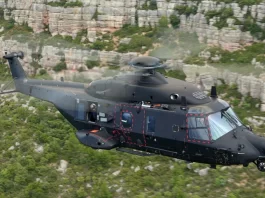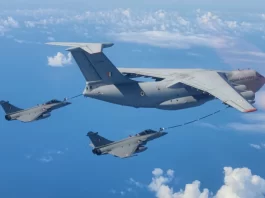A Russian Telegram channel shared a video showing a Lancet kamikaze drone destroying an Air Force MiG-29 jet. The incident took place at the Dolgintsevo airbase in the Dnipropetrovsk region. Positions held by the Russian Armed Forces are approximately 70 km away from the location. According to reports, a more sophisticated model of the attack drone was put to use.
RIA Novosti cites an informed source as saying that the loitering munition Lancet could hit a Ukrainian MiG-29 at a range of more than 80 kilometres thanks to the numerous advancements made to this unmanned weapon.
According to the source, ZALA AERO had implemented a series of advances in the software-hardware complex of the unmanned system. This innovation enables the diverse use of kamikaze drones beyond the ground control complex’s direct line of sight. In addition to that, a variety of new methods of design were used.
He went on to say that as a consequence of this, the MiG-29 that was located at the Ukrainian airfield was successfully hit by the Lancet at a total range of more than 80 km from the launch location of the device, which was located behind the Russian defensive positions.
The reconnaissance-strike configuration with the “Lancet” system, which is used by units of the Russian Armed Forces, has now become a genuine “frontline long arm,” according to the source.

The loitering munitions “Lancet” were developed by ZALA AERO. A single large X-shaped wing and a pair of smaller X-shaped wings are included on the most recent models of these devices in current service with the Russian Armed Forces. Depending on the kind of target that needs to be destroyed, the loitering munitions can carry three or five kilogrammes worth of warheads: fragmentation-high-explosive, cumulative, or thermobaric. Howitzers, air defence systems, various radars, rocket artillery systems, command and observation stations, and concentrations of enemy forces are some of the typical objectives for “Lancets” inside the area of responsibility. Other potential targets include rocket artillery systems.
In July, ZALA AERO presented a demonstration of the most recent iteration of their loitering munition, which now had only three wings rather than the previous version’s four. This new “Lancet” model features a foldable wing, which makes it possible for the vehicle to be launched from a containerised launch system.
Due to its silent operation, the kamikaze drone “Lancet” poses a significant threat. Since the engine operates silently, it is extremely difficult for air defence systems to detect the UAV. Not only can radar stations identify drones, but noise can also help in detection. This silent operation can present a substantial difficulty for defence systems, particularly those that rely on auditory or visual clues to detect impending threats.






